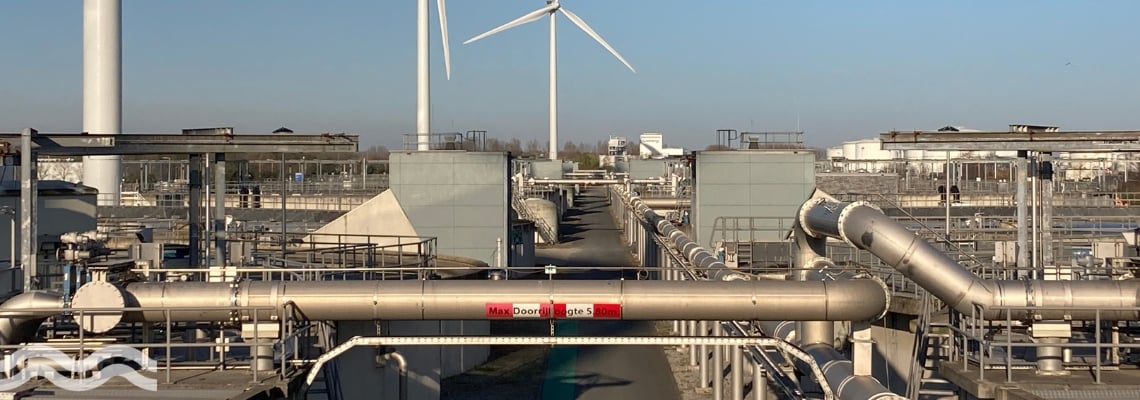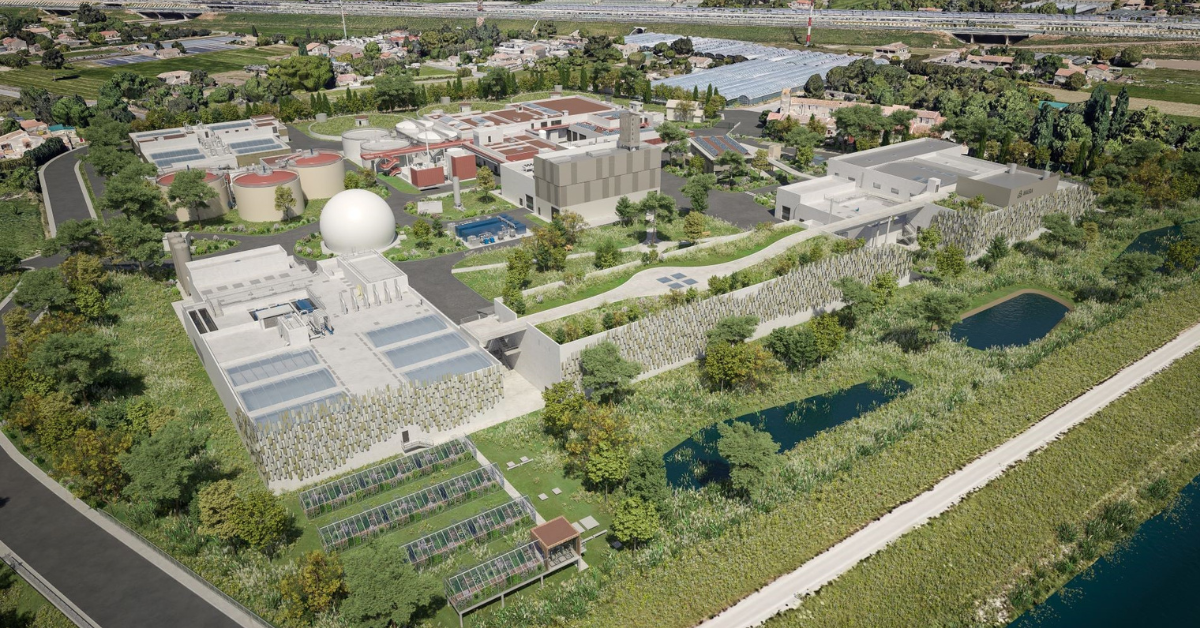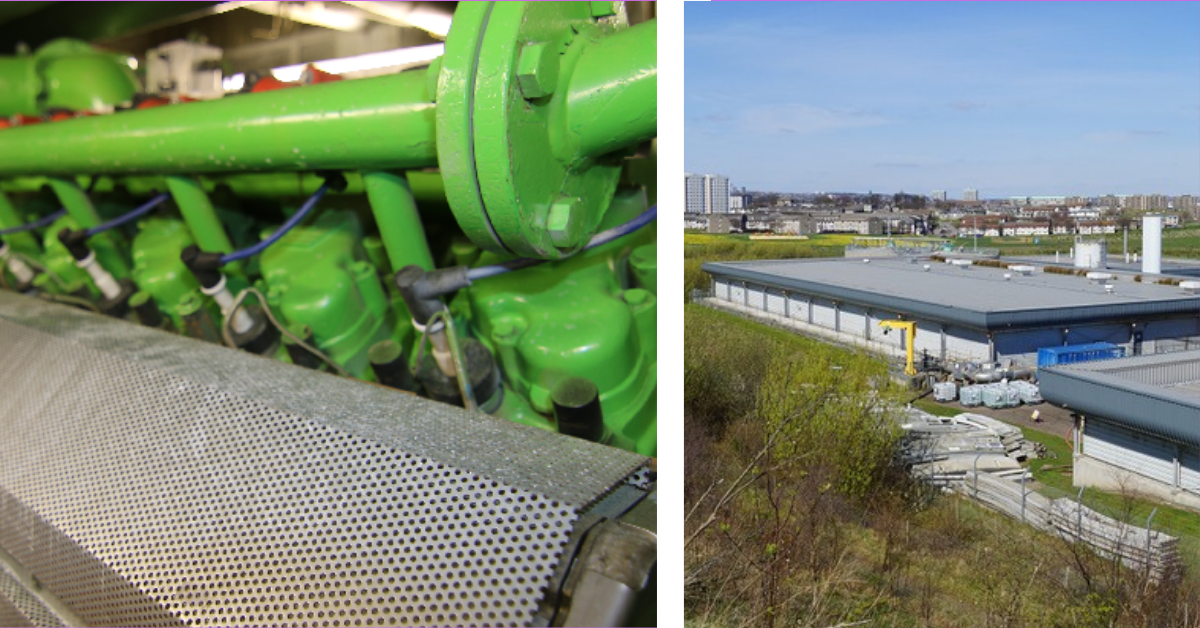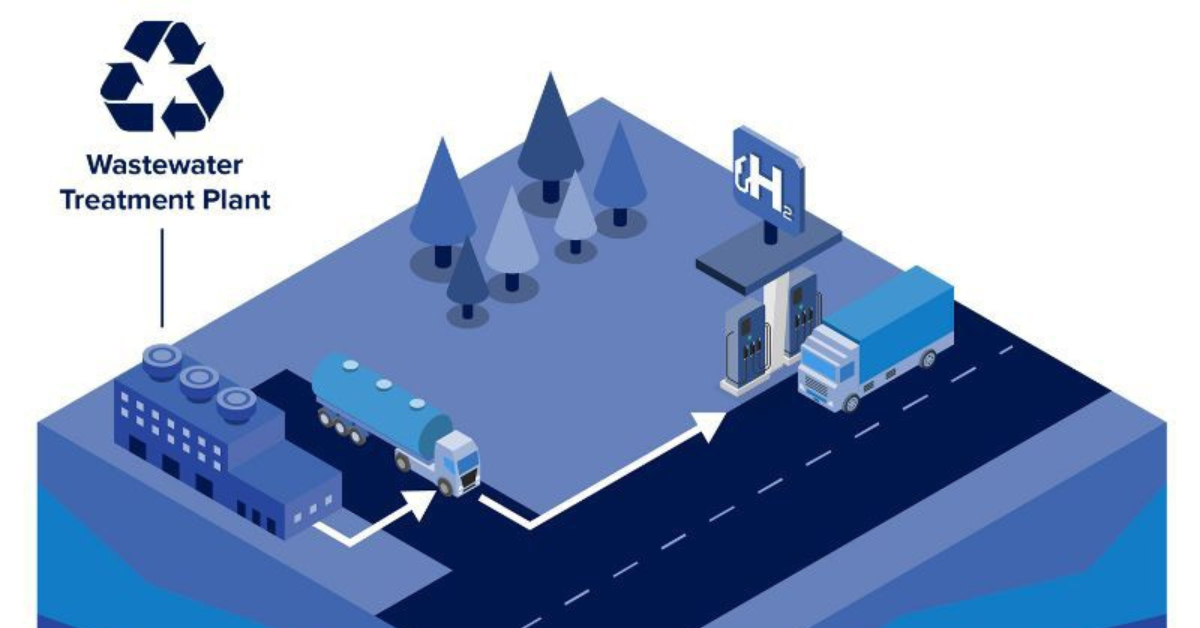Wastewater plant generates more energy than it uses
Waternet, the public water utility of Amsterdam and operational arm of Water Authority Amstel, Gooi and Vecht, is one of the first water authorities in the Netherlands to consistently produce more energy than it consumes.
Wind turbines help to provide more than enough power
Located in Amsterdam's main wastewater treatment plant (WWTP West), four wind turbines are generating clean, renewable energy. The turbines were erected over the course of eight nights and were assembled piece by piece from the central reservation using a 160-metre-high crane.
The four turbines, together, generate 21,000 megawatt-hours of green electricity per year – equivalent to the annual consumption of 10,000 households in Amsterdam. The four wind turbines are the first of a scheduled 17 new turbines that the City of Amsterdam is planning to install in the coming years.
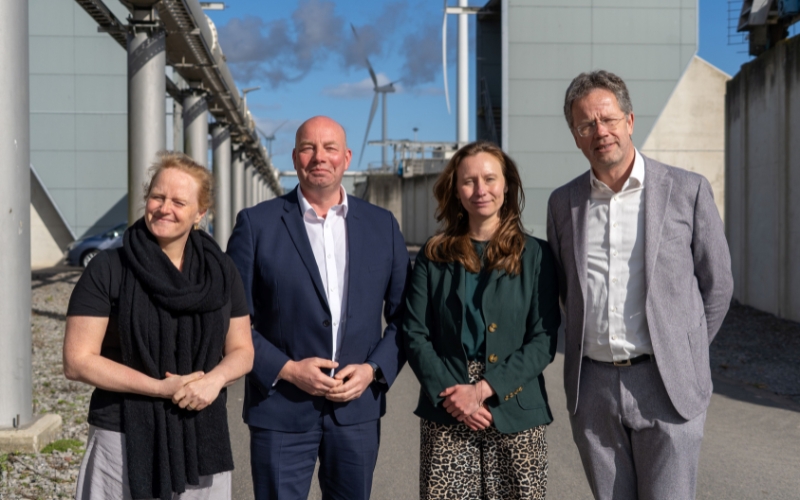
Water powered by a mix of renewables
Although the new wind turbines have helped the WWTP become energy positive, they are not the only renewables being used on site. The mix of renewable energy sources utilised by the water authority include more than 20,000 solar panels and one of the largest green gas installations in the Netherlands, which produces bio-gas from sewage sludge.
For the development and operation of the wind farm, the water authority partnered with sustainable waste and energy company HVC – the company is also co-owner of the turbines.
Sander Mager, Water Authority Amstel, Gooi and Vecht board member, told Aquatech Online: "I'm incredibly proud that we are one of the first water authorities to generate more energy than we use through sustainable energy sources. We are constantly looking for ways to contribute to the energy transition."
However, he cautioned that more needed to be done in terms of energy supply: "The demand for energy will continue to rise due to the growing city of Amsterdam and the increasing number of substances we need to remove from wastewater," he added.
Looking ahead to meet future challenges
While the water authority currently produces more energy than it consumes, as Mager cautioned, energy demands are rising and will continue to rise. Rapid urban growth, stricter water quality standards, and the effects of climate change all mean higher energy consumption for pumping and treatment.
That's why the authority continues to explore new ways to save energy and expand renewable energy production, including working partners such as HVC in the development, construction and operation of the wind farm.
Dion van Steensel, CEO of HVC told Aquatech Online: "HVC is proud of this strong collaboration with the water authority – one of our shareholders – whom we support in its journey towards sustainability. The Dutch energy landscape is changing, which calls for local solutions, innovation and strong partnerships. Only together can we accelerate the energy transition."
A step on the journey toward climate neutrality
The four wind turbines will help to prevent over 14.4 kilotonnes of carbon emissions per year – around 20 percent of the water authority's total footprint. As such, they mark a significant step towards the goal of becoming climate neutral by 2030.
The water authority is also exploring other promising renewable alternatives such as aquathermal energy – using heat from wastewater and surface water – to provide future-proof, fossil-free heating for buildings and homes.
Share your water technology stories with us
Do you have an innovation, research results or an other interesting topic you would like to share with the international water technology industry? The Aquatech website and social media channels are a great platform to showcase your stories!
Please contact our Sr Brand Marketing Manager Annelie Koomen.
Are you an Aquatech exhibitor?
Make sure you add your latest press releases to your Company Profile in the Exhibitor Portal for free exposure.
We promise never to send you spam and you can unsubscribe at any time!
